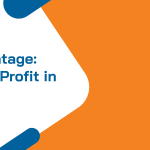
Trust the System: How to Create Accountability Without Micromanaging
At some point in the scaling journey, every CEO hits a turning point: you’ve hired managers, built out processes, and taken that first real step away from the day-to-day. In theory, your company should now “run itself”—but instead, you find yourself wondering:
- Why is follow-through inconsistent?
- Why do I still feel like I need to check in constantly?
- Why do I feel responsible for everything, even with a team in place?
Welcome to the Stage 4 paradox: you’ve installed the pieces, but accountability still feels fragile.
The good news? You’re not alone. In Stage 4 of the 7 Stages of Growth model, companies are transitioning toward operational maturity, but this shift demands more than just hiring and restructuring. It requires a cultural change: one that promotes ownership without control and clarity without micromanagement.
This blog explores how leaders can establish systems that promote accountability while minimizing the need for micromanagement—and why this shift is essential for cultivating a sustainable business.
Why Micromanagement Persists—Even in “Mature” Companies
Micromanagement isn’t always about ego. Often, it’s rooted in:
- Fear of missed expectations
- Lack of visibility into execution
- Unclear roles or KPIs
- A culture that hasn’t caught up with the company’s complexity
In Stage 4, companies typically experience a Builder/Protector Ratio of 3:2, indicating that they still need to drive innovation but must now incorporate greater risk awareness and operational safeguards. Suppose a company does not shift its behavior to match this ratio. In that case, leaders may continue to behave as if they’re in Stage 2 or 3—staying overly involved, unintentionally slowing progress, and limiting growth.
Accountability ≠ Oversight
It’s easy to confuse oversight with accountability, but they are distinct concepts.
- Oversight involves managing tasks and monitoring their outcomes to ensure effective execution.
- Accountability means building trust that people will take ownership of outcomes and drive results independently.
You can have complete oversight without real accountability—and that’s where many Stage 4 companies get stuck.
The goal is to create a system where everyone is clear about their responsibilities, understands how success is measured, and knows what happens if expectations are not met, without requiring daily check-ins or approvals.
The 4 Components of True Accountability
To create accountability without micromanagement, companies must build four key foundations:
1. Clarity of Expectations
People can’t meet expectations they don’t understand. Vague goals, shifting priorities, and unspoken standards all lead to frustration and reactivity.
What to do:
- Use clearly defined KPIs or OKRs for each role and function to ensure alignment and accountability across the organization.
- Create written accountability charts for departments or teams.
- Over-communicate what success looks like, not just what needs to be done.
2. Systems and Processes
Structure creates freedom. When your team knows where to find information, how to report progress, and what to do when something goes wrong, they become more independent and less reliant on leadership to intervene.
What to do:
- Implement simple, repeatable operating systems, such as EOS or Traction, and similar frameworks.
- Document workflows and decision-making pathways.
- Utilize weekly scorecards or dashboards to monitor key performance indicators.
3. Psychological Safety
True accountability thrives when people feel safe being honest about wins, failures, and roadblocks. Without this safety, team members default to hiding, blaming, or deflecting.
What to do:
- Encourage the use of “own the outcome” language in meetings.
- Normalize learning from failure rather than punishing it.
- Model vulnerability at the top: “Here’s where I missed last week, and what I’m doing differently.”
4. Rhythm of Accountability
Accountability doesn’t happen with a one-time meeting. It needs a consistent cadence that keeps progress visible and conversations flowing.
What to do:
- Focus on setting clear expectations and facilitating transparent communication.
- Utilize regular check-ins, such as weekly L10s, one-on-one meetings, and quarterly reviews.
- Celebrate follow-through and completion, not just big wins.
- Empower team leads to run their accountability systems within their departments.
From Reactive to Proactive Leadership
When accountability is systematized, CEOs can confidently shift into a proactive leadership role, focusing on growth, strategy, and culture, rather than triaging tasks or following up on action items.
It’s a major identity shift. For many founders and early-stage leaders, the transition feels uncomfortable. But the reward is enormous:
- Less stress and burnout
- More consistent execution
- A leadership team that truly leads
- A culture that values ownership at every level
Apex GTS and the Accountability Equation
At Apex GTS Advisors, we guide companies through this transition using the Stages of Growth X-Ray™. We help CEOs and executive teams:
- Diagnose their current growth stage
- Understand how behaviors (including micromanagement) are impacting results
- Clarify the Builder/Protector Ratio driving team dynamics
- Install systems and leadership structures that reinforce accountability
Because you can’t scale what you can’t trust—and you can’t trust what you haven’t defined.
Final Thought: Control Might Get You Results, But Trust Builds a Company
Micromanagement feels like control, but it’s actually a symptom of misalignment. When leaders step in constantly, it’s usually because the system—or the culture—hasn’t been cultivated to carry the weight.
Accountability without micromanagement is not just possible—it’s necessary. It frees your time, empowers your team, and sets the foundation for a business that scales with you, not because of you.
And when that shift happens? Growth isn’t just intentional—it’s exponential.





